
Det kan være skræmmende at beslutte sig for, hvilke investeringsforeninger der skal være inden for din 401(k), og rækken af valg er svimlende og måske endda lammende.
Men det behøver det ikke at være.
Hvert år analyserer vi med hjælp fra finansdatafirmaet BrightScope, et finansdatafirma, der vurderer pensionsopsparingsordninger på arbejdspladsen, de 100 investeringsforeninger med flest aktiver i 401(k) og andre bidragsdefinerede ordninger og vurderer dem Køb, Hold eller sælg. Vores mål:at guide dig mod de bedste investeringsforeninger, der sandsynligvis vil være tilgængelige i din arbejdspladsplan.
I sidste ende vandt 30 seje fonde, som vi vil beskrive i detaljer nedenfor, vores godkendelsesmærke. Men du skal være opmærksom på det med småt. Nogle fonde er velegnede til aggressive investorer; andre er gearet til moderate sparere.
Vi vil også påpege, at vi ikke vægtede indeksfonde. Det skyldes, at valget af en god indeksfond altid hviler på tre enkle spørgsmål:1.) Hvilket indeks vil du efterligne? 2.) Hvor godt har fonden gjort det med at matche det indeks? 3.) Hvor meget opkræver fonden? Generelt har vi dog ingen problemer med nogen af de indeksfonde, der er opført i top 100.
At vurdere aktivt forvaltede investeringsforeninger er et andet dyr. Vi ser på hver afdelings langsigtede afkast og år-til-år resultater, såvel som dens volatilitet, og hvordan den klarer sig på vanskelige markeder. Vi tager også stilling til ledere, honorarer og andre faktorer.
Her er de 30 bedste investeringsforeninger for 401(k) pensionsopsparere, når vi går ind i 2022, plukket ud af landets 100 mest populære muligheder. Din 401(k) vil sandsynligvis ikke tilbyde alle disse midler, men det er sandsynligt, at i det mindste nogle vil være tilgængelige. Mens nogle måske passer til din personlige situation, og andre måske ikke er, skiller hver investeringsforening sig ud for sin kvalitet, hvilket gør den til et førsteklasses valg for dens respektive kategori.

Uden for 401(k)-ordninger (eller andre lignende arbejdsgiver-sponsorerede pensionsopsparingsordninger), JPMorgan Equity Income lukket for nye investorer i august 2021. Men hvis din 401(k)-plan tilbyder fonden, gælder disse regler ikke. Du kan til enhver tid købe aktier som førstegangsbruger.
Betragt dig selv som heldig.
Tilmeld dig Kiplingers GRATIS Closing Bell e-brev:Vores daglige blik på aktiemarkedets vigtigste overskrifter, og hvilke skridt investorer bør foretage.
OIEIX er en af de bedste 401(k) investeringsforeninger for investorer, der ønsker et værdiorienteret aktieprodukt til at runde deres portefølje af. Lead manager Clare Hart og hendes kolleger, Andrew Brandon og David Silberman, leder efter kvalitetsvirksomheder med attraktive udbytteudbytter på mindst 2 % på købstidspunktet. De favoriserer virksomheder med ensartet indtjening, højt afkast af investeret kapital og varige franchise. Fondens største beholdninger omfatter Comcast (CMCSA), UnitedHealth Group (UNH), BlackRock (BLK) og Bank of America (BAC).
Udbyttehældningen skubber fonden ind i værdikategorien for store virksomheder, som har haltet det brede marked. For eksempel har JPMorgan Equity Income givet et afkast på 9,0 % i gennemsnit over de seneste 15 år; der følger S&P 500, som steg 10,6 % årligt i samme periode.
Men sammenlignet med andre store værdifonde er OIEIX en konsekvent vinder. Det overgik sine jævnaldrende – fonde, der investerer i store virksomheder til en værdifuld pris – i otte af de seneste 10 hele kalenderår.
Afdelingen, som giver et afkast på 1,3 % i øjeblikket, er et solidt valg for investorer, der søger værdi-aktieeksponering.
Lær mere om OIEIX på JPMorgan-udbyderens websted.
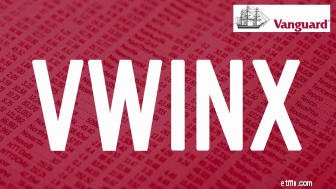
Vanguard Wellesley-indkomst fejrede sit 50 års jubilæum i juli. Men det er ikke den ældste aktie- og obligationsfond i Vanguards stald. Den ære går til Vanguard Wellington, som vi kommer til et øjeblik.
Men i modsætning til Wellington hælder Wellesley Income mere mod obligationer end aktier. To tredjedele af dets aktiver er obligationer, mens resten er aktier. (Wellington har flere aktier end obligationer).
Den store obligationsbeholdning giver en stabil fond. I løbet af det sidste halve århundrede, ifølge Dan Wiener, redaktør af The Independent Adviser for Vanguard Investors, Wellesley Incomes "fremragende funktion er dens stabilitet."
Stabilitet og dæmpet afkast går dog ofte hånd i hånd. I løbet af de sidste 15 år har VWINX's årlige afkast på 7,1 % ikke holdt trit med det brede marked, men det slår 96 % af sine jævnaldrende:fonde, der allokerer 30 % til 50 % af aktiverne til aktier.
Michael Reckmeyer driver aktiesiden, og Loren Moran vælger obligationerne. Begge forvaltere er veteraner fra Wellington Management – et investeringsselskab med langsigtede bånd, som underrådgiver mange af Vanguards mest kendte aktivt forvaltede fonde. I lighed med Vanguard Equity-Income, som Reckmeyer også hjælper med at administrere, bliver vi nødt til at holde øje med VWINX fremover.
Med den store mængde obligationer i sin portefølje er Wellesley Income bedst egnet til konservative investorer.
Lær mere om VWINX på Vanguard-udbyderens websted.
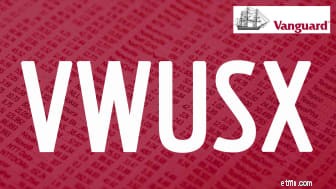
Vanguard U.S. Growth har givet nogle gode afkast i visse år – på det seneste et afkast på 59 % i 2020 – men det har skullet håndtere en del forandringer. For det første har den to gange absorberet aktiverne i en dårligt præsterende peer-fond – Growth Equity i 2014 og Morgan Growth i 2019.
Så er der den konstante rotation af underrådgivere i fonden. Ifølge Morningstar er der sket otte delvise forvalterskift i fonden siden 2010. Den seneste fandt sted i begyndelsen af 2021. Vanguard droppede investeringsselskabet Jackson Square som forvalter efter 11 år. Fire underrådgivere er tilbage:Wellington Management, Jennison Associates og Baillie Gifford – hver driver omkring 28 % af aktiverne – og Vanguards interne kvantitative aktiegruppe, som driver resten. I år gennemgår quant-gruppen sin egen omrokering; mangeårige medlemmer af teamet James Stetler og Binbin Guo trak sig begge på pension.
Alt det at flytte rundt på dele er bekymrende, og det gør det vanskeligt at vurdere de langsigtede fordele ved en fond. Men baseret på nyere præstationer går det svømmende. VWUSX's femårige årlige afkast slår S&P 500, det meste af sin peer-gruppe og endda Vanguard Primecap, firmaets ærede vækstselskabsfond. Det har dog været en ujævn tur. I løbet af de seneste fem år har denne Vanguard-fond oplevet volatilitet over gennemsnittet sammenlignet med alle vækstfonde i store virksomheder.
Hvis U.S. Growth er den eneste aktivt forvaltede vækstfond for store virksomheder, der tilbydes i din 401(k), og du har maven til en masse volatilitet, er det en solid mulighed. Hvis du ikke er den slags investor, kan du dog overveje andre muligheder i din plan, som kommer med mindre usikkerhed (for så vidt angår ledelsen) og lidt mere stabile resultater.
Lær mere om VWUSX på Vanguard-udbyderens websted.

Mellem 2004 og slutningen af 2020 havde Giri Devulapally kørt JPMorgan Large Cap Growth som den enlige leder. Men han tiltrådte tre nye medarbejdere i november 2020. Siden da er fonden kommet bagud i forhold til sine jævnaldrende:fonde, der investerer i store, voksende amerikanske virksomheder.
Dette er ikke usædvanligt på kort sigt, når nye ledere kommer på banen. Men på egen hånd havde Devulapally en nogenlunde stabil, jævnaldrende rekord. I løbet af de sidste 15 år har JPMorgan Large Cap Growth overgået 90 % af sine konkurrenter og S&P 500 med et årligt afkast på 14,7 %.
Lederne hos JPMorgan Large Cap Growth investerer for det meste i store virksomheder, der kan levere betydelig vækst over de næste tre til fem år. Disse virksomheder driver typisk forretning på et marked, der er under meningsfuld forandring, har bæredygtige konkurrencefordele, dokumenteret stærk eksekvering og opadgående momentum i aktiekursen. Lederne kan for eksempel lide den førende landbrugs- og tunge maskineproducent Deere (DE), fordi den har udviklet teknologi, der hjælper landmænd over hele verden med at øge produktiviteten. Og de kan lide Freeport-McMoRan (FCX), et mineselskab, fordi det står til at drage fordel af en øget efterspørgsel efter kobber til fremstilling af elektriske køretøjer. Fondens største beholdninger, ved sidste rapport, er Alphabet (GOOGL), Apple (AAPL) og Microsoft (MSFT).
OLGAX er en god investeringsforening for investorer, der ønsker at øge eksponeringen i deres 401(k) til hurtigtvoksende virksomheder.
Lær mere om OLGAX på JPMorgan-udbyderens websted.
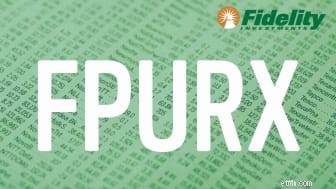
Manager Daniel Kelley overtog Fidelity Puritan i midten af 2018, men han ser ud til at finde vej. Det er derfor, vi opgraderer denne fond fra Hold til Køb. Fondens årlige afkast på 19,0 % siden midten af 2018 overgår let fondens benchmark, en 60/40-blanding af S&P 500-indekset og Bloomberg US Aggregate Bond-indekset, samt det årlige afkast på 13,2 % for den typiske balancerede fond.
Tilmeld dig Kiplingers GRATIS Investing Weekly e-brev for aktie-, ETF- og investeringsforeningsanbefalinger og anden investeringsrådgivning.
På aktiesiden er Kelley afhængig af fundamental og kvantitativ analyse for at opbygge porteføljen. Han favoriserer virksomheder, der tilbyder indtjening og omsætningsvækst til en rimelig pris. FPURX har i øjeblikket en høj andel på 70% af aktiverne. På obligationssiden, som omfatter en ejerandel på omkring 5 % i højtforrentede obligationer, er målet at finde attraktivt prissatte obligationer med et disciplineret øje på risikostyring.
På det seneste har Kelley læsset op på detailaktier, der kan drage fordel af en ophobet efterspørgsel fra forbrugere såvel som finansielle virksomheder, som kan vinde på en forbedret låneefterspørgsel, efterhånden som økonomien genåbner. En rentestigning, hvis det sker, ville også være en bonus for bankerne.
På obligationssiden er stigende inflation og renter et problem. (Obligationskurser og renter bevæger sig i modsatte retninger.) Så Puritan vipper i øjeblikket mod virksomhedsobligationer af investeringsgrad, især dem, der er udstedt af finansielle virksomheder, givet bankernes stærke balancer og attraktive værdiansættelser.
Lær mere om FPURX på Fidelity-udbyderens websted.
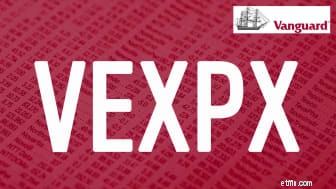
Vanguard Explorer har aktier i små og mellemstore virksomheder i vækst. Det er en af en håndfuld aktiefonde i små virksomheder, der er blandt de 100 401(k) bedste fonde. Men mens mange er indeksbaserede, administreres denne aktivt. Faktisk, i overensstemmelse med Vanguard-måden, har mange en finger med i VEXPX.
Ledere fra fem forskellige firmaer arbejder uafhængigt og anvender deres egen proces til at drive deres dele af fondens aktiver:
Hodgepodge-ledelsesteamet resulterer i afkast, der er lige over gennemsnittet. Men porteføljen er enorm med tæt på 780 aktier, og fonden har 24,7 milliarder dollars i samlede aktiver, hvilket gør VEXPX til den største aktivt forvaltede fond for små virksomheder i landet. Endelig gør adskillige ændringer i underrådgivningsforvaltere gennem årene – og endda for nylig – det svært at med sikkerhed vurdere, hvordan fonden vil klare sig over en hel markedscyklus.
Syv af de 10 ledere i fonden har været på plads i næsten fem år. Og i hvert af de fire hele kalenderår siden starten af 2017 har Vanguard Explorer overgået Russell 2000. Med andre ord har du været bedre stillet i Explorer end i en indeksfond for små virksomheder i den periode.
Bare husk:Fordi aktier i små virksomheder har en tendens til at være mere volatile end aktier i store virksomheder, bør VEXPX være en beholdning som et supplement til en kernebeholdning i en aktiefond for store virksomheder eller en samlet aktiemarkedsfond.
Lær mere om VEXPX på Vanguard-udbyderens websted.
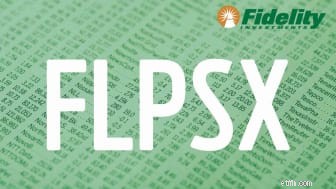
Joel Tillinghast var Fidelity-analytiker, der dækkede tobaks- og personlig pleje-produktfirmaer, da han for mere end 30 år siden kom med et koncept for en ny fond. Tanken var at finde gode værdier i små virksomheder af høj kvalitet og større virksomheder ude af favør.
Fidelity højere-ups elskede det. Så i slutningen af 1989, Fidelity lavprisaktier lanceret.
FLPSX har været en utvetydig succes siden da, med Tillinghast ved roret, der let har overgået den gennemsnitlige årlige gevinst i S&P 500, Russell 2000-indekset for små virksomheder, Russell mid-cap benchmark og næsten alle aktiefonde i små og mellemstore virksomheder. . Morningstar udnævnte for nylig Tillinghast til sin fremragende porteføljeforvalter for 2021.
Nogle ting har ændret sig gennem årene. Tillinghast har nu fem medarbejdere, selvom han stadig driver omkring 95% af fondens aktiver. I fondens tidlige dage skulle aktierne være $15 eller mindre på købstidspunktet. For et par år siden sprang tærsklen til $35, eller aktien skal prale af et indtjeningsudbytte, der falder på eller over medianen for det lille firma Russell 2000-indeks, som stadig er fondens benchmark. Lavprisaktier ejer også flere udenlandske aktier, end de gjorde i de tidligste dage. Ved sidste rapport blev 35 % af aktiverne investeret i internationale aktier, hovedsageligt i Europa og Japan.
Endelig var FLPSX altid fokuseret på virksomheder i alle størrelser, men tidligt vippede det kraftigt mod små virksomheder. Nu er fonden ligeligt fordelt på aktier i store, mellemstore og små virksomheder.
Men Tillinghast og hans medarbejdere leder stadig efter virksomheder med solid overskud, lille gæld og en bæredygtig konkurrencefordel i forhold til kolleger. Han er ikke "nærlig," siger Morningstar-analytiker Robby Greengold, og han "jager ikke moderier."
Lær mere om FLPSX på Fidelity-udbyderens websted.
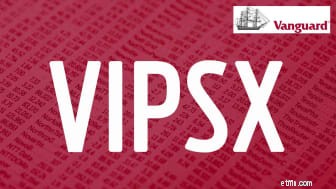
Med inflationen højere end i næsten et årti, er Treasury Inflation-Protected Securities (TIPS) mere i nyhederne. Den årlige inflation for den 12-måneders periode, der sluttede i oktober, var de seneste tilgængelige data, 6,2 %. Det er lidt mere end en tredobling af den årlige inflation på ca. 2 % i forhold til hvert de foregående fem kalenderår.
Investorer, der ønsker at være på forkant med stigende forbrugerpriser, henvender sig typisk til TIPS, fordi oven i en garanteret rentesats bevæger obligationens hovedstol sig i takt med inflationsraten.
Men renterne på TIPS har været negative i flere måneder. Vanguard-inflationsbeskyttede værdipapirer' nuværende udbytte er f.eks. negativ 1,8 %. Det betyder dog ikke, at du får et negativt afkast i denne fond. Snarere vil fondens afkast være inflationsraten minus det negative afkast. I løbet af de seneste 12 måneder er VIPSX f.eks. på trods af negative afkast steget 7,8 %.
Mangeårig fondsforvalter Gemma Wright-Casparius foretrækker TIPS med kort løbetid i disse dage. Næsten halvdelen af fondens aktiver er investeret i TIPS med løbetider på under fem år. Vanguard-undersøgelser viser, at kortsigtede TIPS er mere stabile i perioder med inflationsoverraskelser end mellem- og langsigtede TIPS.
Vanguard Inflation Protected Securities er bedst til pensionerede eller næsten pensionerede investorer. Yngre investorer kan afværge inflationen med afkastet i deres store aktieporteføljer, og årlige lønstigninger vil også hjælpe. Men pensionister har typisk ikke nogen af disse fordele.
Lær mere om VIPSX på Vanguard-udbyderens websted.
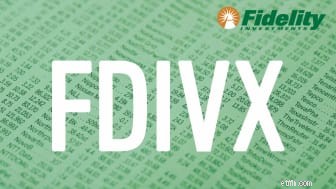
Det er svært at samle begejstring over at investere i udlandet, fordi amerikanske aktier har gjort det så meget bedre end udenlandske aktier.
Som udenlandske aktiefonde går Fidelity Diversified International , som investerer mest i store virksomheder med varige eller forbedrede vækstmuligheder, er et solidt valg. Faktisk har denne Fidelity-fond slået indekset – MSCI EAFE, som sporer udenlandske aktier i udviklede lande – over otte af de seneste 11 hele kalenderår.
William Bower har drevet FDIVX i mere end 20 år. Han favoriserer virksomheder af høj kvalitet med konkurrencemæssige fordele og ensartet rentabilitet. Fondens største landeeksponeringer omfatter Japan, Frankrig og Storbritannien. Men dens investeringer er ikke begrænset til udviklede lande. Faktisk er 10 % af fonden investeret i emerging markets, for det meste i Asien. Dets største beholdninger er ASML Holding (ASML), en producent af fotolitografisystemer, der bruges til at fremstille halvlederchips, medicinalfirmaet Roche Holding (RHHBY) og luksusvareproducenten LVMH Moet Hennessy Louis Vuitton (LVMUY).
Der er bestemt bedre aktivt forvaltede midler derude, men disse midler er muligvis ikke tilgængelige for dig i vores plan. I denne gennemgang skal vi overveje, at dette måske er den eneste aktive udenlandske fond, der er tilgængelig i planen. I den sammenhæng er Fidelity Diversified International et godt valg.
Lær mere om FDIVX på Fidelity-udbyderens websted.

T. Rowe Price New Horizons er gået ind i et nyt kapitel med manager Joshua Spencer, der trådte til, efter at superstjernen Henry Ellenbogen brat forlod T. Rowe Price i april 2019. Indtil videre har det været spændende. Siden Spencer overtog, har han slået konkurrenterne med et årligt afkast på 33,1 %, hvor han slog 94 % af sine konkurrenter – fonde, der investerer i mellemstore virksomheder i vækst – og langt væk foran Russell Midcap Index.
PRNHX er lukket for nye investorer, men hvis det tilbydes i din arbejdsgiversponsorerede pensionsopsparing, kan du frit købe aktier som førstegangsinvestor i fonden.
Ellenbogen var en hård handling at følge. I løbet af hans ni-årige embedsperiode som leder af New Horizons, leverede fonden et årligt afkast på 18,7 %, hvilket slog alle tænkelige diversificerede aktieindekser og alle på nær én amerikansk diversificeret aktiefond:en lille virksomhedsfond kaldet Virtus KAR Small-Cap Growth ( PXSGX).
Men Spencer har sat sit præg på PRNHX. Ligesom Ellenbogen leder han efter små, uopdagede nye virksomheder, der tilbyder potentiale for accelereret indtjeningsvækst på grund af nye produkter, et revitaliseret ledelsesteam eller et strukturelt skift i økonomien. Investeringer i private virksomheder – herunder skomageren Allbirds (BIRD), som først for ganske nylig blev børsnoteret; beklædningsfirma Rent the Runway; og Tempus Labs, et biotekfirma – repræsenterer 5 % af fondens aktiver og tilbyder løftet om forbedret afkast.
Selvom Spencer fokuserer på virksomheder med 7 milliarder dollars eller mindre i markedsværdi på købstidspunktet, ligesom hans forgænger, vil han blive ved, så længe virksomheden vokser. Det er en af grundene til, at New Horizons, der startede under Ellenbogen som en vækstfond for små virksomheder, nu er klassificeret som en mid-cap vækstfond.
PRNHX er en solid investeringsforening for investorer, der ønsker at investere tidligt i virksomheder med solide vækstudsigter.
Lær mere om PRNHX på T. Rowe Price-udbyderens websted.

PGIM Total Return Bond konsekvent slår markedet. I syv af de seneste 10 hele kalenderår (mellem 2011 og 2020) har investeringsforeningen slået Bloomberg U.S. Aggregate Bond-indekset. Det er bedre end den typiske mellemfristede kerne-plus-obligationsfond (disse fonde kan investere op til 20 % i højforrentet gæld). Men interesserede investorer bør vide, at det ekstra afkast kommer med en smule mere volatilitet end dets peers eller benchmark også.
PDBAX kan investere i alle sektorer af rentemarkedet. I øjeblikket foretrækker dets fire medansvarlige virksomhedsgæld og værdipapirer med sikkerhed i investeringsgrad, som de mener giver flere muligheder end statsobligationer og statsgaranterede realkreditobligationer, højforrentede IOU'er og udenlandske obligationer.
Fonden giver i øjeblikket et afkast på 1,6 %.
Lær mere om PDBAX på PGIM-udbyderens websted.
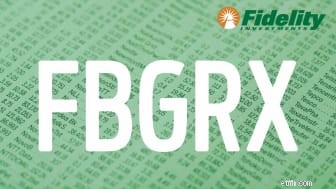
Fidelity Blue Chip Growth er medlem af Kiplinger 25, og er blandt de bedst ydende 401(k) investeringsforeninger, du kan finde. Forvalter Sonu Kalras årlige 10-årige afkast på 23,0 % overstiger 97 % af alle store virksomheders vækstfonde og S&P 500.
"Det, vi forsøger at gøre med denne fond, er at identificere virksomheder, hvor markedet ikke kun prissætter den absolutte vækstrate, men også holdbarheden af denne vækst," siger han. "Det gør vi ved at forsøge at identificere virksomheder, der deltager i store underpenetrerede markeder."
Kalra deler porteføljen op i tre spante:
Sekulære avlere, siger han, er virksomheder, der nyder godt af voksende tendenser såsom e-handel, cloud-teknologi, elektriske køretøjer.
Cykliske avlere omfatter virksomheder, der er i konjunkturcyklussens søde punkt – boligbyggere, der for eksempel nyder godt af flytningen ud af byen under COVID 19, eller energiselskaber på vej tilbage efter pandemiens nedlukning.
Kalra kalder den sidste spand for "opportunistiske dyrkere." Det omfatter virksomheder, der har en katalysator til at drive vækst fremadrettet – en ny leder eller et nyt produkt. American Eagle Outfitters (AEO) er for eksempel en forhandler med et mærke af intimt tøj, der vokser hurtigt, og en online forretning, der blomstrer.
Investorer, der leder efter en aktivt forvaltet fond, der kan slå S&P 500, er ikke blevet skuffet i de 12 år, Kalra har drevet fonden. Vi forventer ikke, at det ændrer sig.
Lær mere om FBGRX på Fidelity-udbyderens websted.
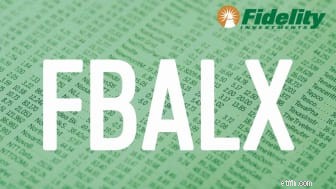
Funds that hold stocks and bonds, otherwise known as balanced funds, are typically considered moderate all-in-one funds. But Fidelity Balanced is a little turbocharged. It typically holds an above-average stake in stocks compared with the peer group, funds that allocate 50% to 70% of assets to stocks.
At last report, FBALX held 72% of its assets in stocks – nearly 10 percentage points more than the typical balanced fund. On the bond side, the fund is a bit more staid than others, generally speaking. Investment-grade securities, rated between triple-A and triple-B, fill most of the bond portfolio – more than the typical balanced fund holds in high-grade bonds – and represent 23% of the entire portfolio. Junk-rated or below bonds make up just 1% of the fund's assets.
This Fidelity fund has a unique setup. Über-manager Robert Stansky makes the big-picture decisions of how much of the portfolio should own in stocks and in bonds. Eight stock pickers and four bond pickers, who specialize in specific sectors, do the specific security selection. U.S. government bonds dominate the bond portfolio. The usual suspects – including Microsoft, Apple, Amazon.com (AMZN) and Alphabet – top the stock side.
Balanced funds are good choices for investors who want a no-fuss, all-in-one fund. But this one is more aggressive than others. That means more volatility in down markets, so bear that in mind when you invest.
But overall, FBALX remains among the best Fidelity funds. The portfolio positioning has helped Fidelity Balanced deliver a 10-year annualized return that beats 96% of its peers. It also results in a yield of about 0.8% at present.
Learn more about FBALX at the Fidelity provider site.
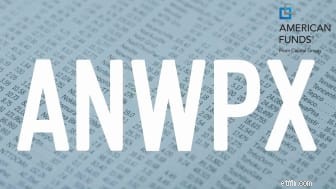
American Funds New Perspective fund splits its portfolio between U.S. and foreign stocks. It's a solid option for investors looking to beef up their foreign stock exposure, but who don't want to go all-in on a foreign-stock fund.
Seven managers divide the portfolio's $140 billion in assets and invest their own sleeve as they see fit. But they all must invest in companies that receive a meaningful share of sales and operations outside of their home base. Together they have constructed a roughly 300-stock portfolio of mostly large companies with above-average earnings growth. Tesla (TSLA), Microsoft and Facebook platform Meta Platforms (FB) are the fund's top holdings.
Next to its peers – funds that invest in foreign and U.S. large companies – New Perspective has stayed above average for the majority of each of the past 11 calendar years.
Learn more about ANWPX at the Capital Group provider site.
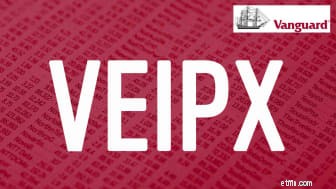
Two longtime fund managers recently stepped down at Vanguard Equity-Income , which is a member of the Kiplinger 25. But we're not adjusting our Buy recommendation for the fund – yet.
Although manager changes can be tricky, in VEIPX's case, the managers who left are part of Vanguard's in-house quantitative equity group, which relies on a complex algorithm to choose stocks. That computer model shouldn't change with the new guard. Plus, the quant group runs just one-third of the portfolio.
However, the lion's share of the portfolio is run by Wellington Management's Michael Reckmeyer, who recently announced plans to retire in June 2022. That could affect our thoughts on the fund moving forward, so stay tuned.
Reckmeyer favors high-quality companies that pay increasingly higher dividends over time. "We focus on sustainable payouts and companies that increase dividends on an annual basis," he says, "because over the long haul, dividends drive 40% of returns over the years."
But Reckmeyer likes a good bargain. He prefers to step in when the market overreacts to bad short-term news. "It's a bit of a contrarian take to dividend investing," he says.
Vanguard Equity-Income might not beat the S&P 500 over time. But it's not too far behind, and the ride is smoother than that of the broad index. Plus, the fund's dividend yield, 2.2%, beats the current 1.3% yield of the S&P 500.
Learn more about VEIPX at the Vanguard provider site.

Manager Brian Berghuis has run T. Rowe Price Mid-Cap Growth for close to three decades (it will be 30 years in June 2022), delivering a 14.3% annualized return over the period. No other diversified U.S. stock fund manager in the country has done better – for as long. Although three other diversified U.S. stock funds sport slightly higher annualized returns over that period, none were earned by the same manager over the entire period.
RPMGX has been closed to new investors since 2010. But if Mid-Cap Growth is offered in your 401(k), that doesn't matter. Participants in a retirement-savings plan that includes Mid-Cap Growth as an investment option can invest at any time.
Now the only question is how much longer Berghuis, who just entered his 60s, will stick around. He has not announced any plans to retire. That's good news. But Mid-Cap Growth has taken on associate managers, which at T. Rowe Price is sometimes a signal (albeit a distant one) that a manager transition is in the works. The firm prefers to make changes slowly, and adding associate managers to a fund a year in advance of a manager change is not uncommon.
Berghuis still is lead portfolio manager and is ultimately responsible for portfolio decisions, but Donald Easley and Ashley Woodruff were recently named associate managers on the fund; John Wakeman has been an associate portfolio manager since 1992.
We're envious of those 401(k) plan participants who can invest in RPMGX. It's all-around one of the best T. Rowe Price funds on offer.
Learn more about RPMGX at the T. Rowe Price provider site.
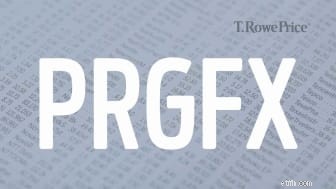
T. Rowe Price Growth Stock is one of three large-company growth funds from T. Rowe Price – along with Blue Chip Growth (TRBCX) and Large-Cap Growth I (TRLGX) – that rank among the most widely held 401(k) funds. That's hardly surprising given the firm's rich record with growth investing. Chances are your 401(k) plan only offers one of them, so you won't have to choose between them.
PRGFX is a decent choice for investors looking for a good growth fund. Manager Joe Fath likes to invest in companies that feature one or more of the following characteristics:industry leadership in a lucrative part of the economy, superior growth in earnings and cash flow, an ability to sustain or expand earnings momentum even during tough economic times. The traits typically lead Fath to concentrate on four sectors:information technology, consumer discretionary, communications services and healthcare.
In mid-2021, PRGFX shareholders agreed to reclassify the fund as non-diversified, instead of diversified, meaning the fund can invest a greater portion of its assets in fewer issuers. This could lead to more volatility, but the firm has said publicly that it believes reclassification won't "substantially affect the way a fund is currently managed."
Fath hasn't made significant changes to the portfolio, yet. In late 2020, the fund's biggest 10 holdings in the fund represented 45.9% of the fund's assets. At the end of September 2021 – three months after Growth Stock was reclassified – the top 10 holdings represented 46.9% of the fund's assets.
PRGFX is one of the best mutual funds available in 401(k) plans, and a solid growth stock fund for investors looking to spice up their core portfolio.
Learn more about PRGFX at the T. Rowe Price provider site.
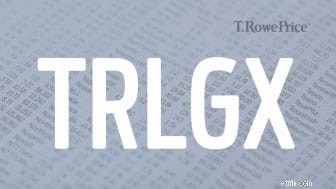
Regular mom-and-pop investors can't invest in T. Rowe Price Large-Cap Growth I , which has a $1 million minimum and is designed for institutional clients, such as a 401(k) plan. But it's one of T. Rowe Price's best funds. And it sports a well-below-average 0.56% expense ratio, the lowest of all the T. Rowe price funds mentioned in this story.
Manager Taymour Tamaddon took over in early 2017, so we limit our scrutiny to the length of his tenure. But Tamaddon has delivered, outperforming his peers – funds that invest in large, growing companies – as well as the S&P 500.
Tamaddon, like almost every other U.S. growth stock fund manager, holds the usual suspects at the top of his portfolio. but he takes sizeable bets. Alphabet, Microsoft and Amazon.com, at last report, were the top three holdings and represented nearly 27% of the fund's assets.
Along with Blue Chip Growth and Growth Stock, Large-Cap Growth was also reclassified in mid-2021 as a non-diversified fund with the SEC, which allows it to concentrate in a certain sector, industry or geographic area. Tamaddon already takes big stakes in specific stocks. But further concentration might add to the fund's volatility.
Even so, as long as you can stomach the bumps along the way, T. Rowe Price Large-Cap Growth is a solid choice for investors looking to tap into fast-growing U.S. companies.
Learn more about TRLGX at the T. Rowe Price provider site.
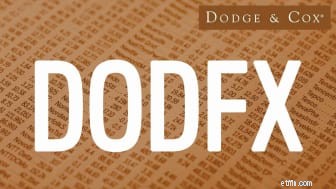
At Dodge &Cox International Stock , seven managers work together doing meticulous research on every prospective security. They love a good bargain, which makes them a bit contrarian. When any given company shares are down because of bad news or economic headwinds, you can bet that DODFX managers are poking around. They're looking to find good deals on companies with a competitive edge, good growth prospects and smart executives.
International has leeway to invest in companies in the developed and emerging worlds. At last report, 20% of the fund's assets were invested in emerging-markets countries, including Brazil, China, India, Mexico and Peru. But firms based in Europe and the U.K. comprise most of the portfolio. Drug companies GlaxoSmithKline (GSK) and Sanofi (SNY) are the fund's top holdings.
DODFX has a big position in pharmaceuticals stocks – 16% of the fund's assets – because the managers view them as a compelling pocket of the market. "Strong innovation pipelines should drive attractive earnings growth over the coming years," say the managers.
Foreign stocks have trailed U.S. stocks in recent years, and that's still the case today. Over the past 12 months, the MSCI EAFE index, which tracks stocks in foreign developed countries, put up a decent 17.0% return, but that lags the 33.0% gain in the S&P 500. Emerging-markets stocks, as measured by the MSCI Emerging Markets index, also trailed, with a 6.5% gain over the past year.
Dodge &Cox International Stock has at least done better than the international indexes, with a roughly 18% return over the past 12 months, in part because the value-priced shares have done better.
DODFX is a solid 401(k) mutual fund for investors who want an actively managed foreign-stock portfolio. But some patience is required for this contrarian strategy.
Learn more about DODFX at the Dodge &Cox provider site.
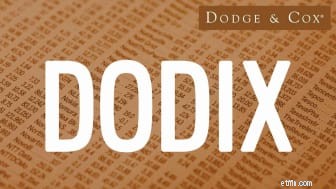
Dodge &Cox is a 90-year-old company with a steady, consistent investment process. Multiple managers take on each fund.
On Dodge &Cox Income , eight managers with an average of more than two decades of investing experience buy mostly high-quality bonds with an eye toward providing current income and preserving capital. Their hunting grounds include a variety of fixed-income sectors including Treasuries, mortgage- and asset-backed debt, corporate debt and municipal bonds, among others. But they like a good bargain and will tilt toward pockets of the market where they see good opportunities, within the context of their view of the economy and relative yields of securities in bond subsectors, among other factors.
Over each of the past one, three, five, 10 and 15 years, DODIX has beat the Bloomberg U.S. Aggregate Bond index.
Active management counts when it comes to investing in intermediate-term bond funds, and the managers at Dodge &Cox certainly back that up. Before the pandemic, in early 2020, the managers significantly reduced the fund's exposure to corporate bonds because the difference in interest rates between corporate debt and Treasuries with comparable maturities was slim.
That move set DODIX up well for the bond selloff in March 2020 because it had cash at the ready. Many high-quality, creditworthy companies issued long-term debt at yields comparable to junk-rated debt, and the managers snapped up these attractively priced bonds, such as those issued by Anheuser-Busch InBev (BUD), Coca-Cola (KO), Exxon Mobil (XOM), FedEx (FDX), Oracle (ORCL) and T-Mobile US (TMUS).
Corporate bonds went on to have a banner year and helped lift the fund's gain in 2020 to 9.5%, outpacing the 7.5% return in the Bloomberg U.S. Aggregate Bond index, and ranked among the top 23% of its peers:intermediate-term core-plus bond funds. (The core-plus indicates that the fund is allowed to own up to 20% of its assets in high-yield bonds, unlike core bond funds which can hold up to 10%.)
DODIX yields 1.4%.
Learn more about DODIX at the Dodge &Cox provider site.
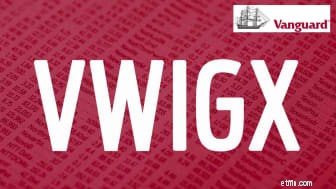
We have long lauded Vanguard International Growth as a superstar for delivering above-average returns with below-average risk. But we're feeling a little cautious these days because a key manager is leaving in April 2022.
Investment firm Baillie Gifford is one of two subadvisers that run the fund, but it manages the biggest chunk (70%) of the assets. And James Anderson, a manager since 2003, is leaving. Comanager Thomas Coutts remains, however, and he's been in place since late 2016. Lawrence Burns was named comanager in 2020.
Managers from Schroders run the remaining 30%, and nothing is changing there. Simon Webber has been with the fund since late 2009, though he too, has a new comanager in James Gautrey, who joined in late 2020.
The two firms, both U.K.-based, have slightly different approaches to picking growth stocks; Vanguard chose them to complement each other. Baillie Gifford is willing to pay up for stocks with explosive growth. Schroders' ideal stock is underappreciated but growing fast.
The portfolio holds roughly 120 stocks, mostly in large companies domiciled in developed countries. But China stocks make up 14% of the assets. Hong Kong and India combined represent another 4% or so.
VWIGX has long been one of our favorite international stock funds. But we'll be watching it carefully over the next year or two. Fund manager changes can sometimes (but not always) result in some portfolio volatility as new managers settle in and make their mark.
Learn more about VWIGX at the Vanguard provider site.
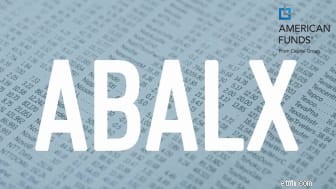
Like other balanced funds, American Funds American Balanced holds stocks and bonds. It is designed, say the managers in a recent report, "to serve as the complete portfolio of a prudent investor."
In other words:Buy shares in this fund, and you're done.
ABALX fine-tunes its blend of stocks and bonds to achieve three goals:conserve capital, provide current income and offer long-term growth. Keeping volatility at bay and delivering steady returns is also a priority. At last report, the fund held 65% of its assets in stocks, 32% in bonds and 3% in cash and other securities. The fund has a current SEC yield of 1.00%.
The portfolio's risk-aware positioning helped in early 2020, when both stocks and bonds plummeted in value during the pandemic's early days. American Balanced sank 22% between February and March 2020, while its typical peer – funds that allocate 50% to 70% in stocks – lost 24%. Indeed, the fund is a peer-beater. Over the past 10 years, American Balanced outpaced 86% of its peers with a 12.3% annualized return.
ABALX is among the best mutual funds you can stash in a 401(k) portfolio. As balanced funds go, it's a standout option.
Learn more about ABALX at the Capital Group provider site.
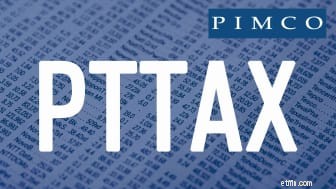
Managers Sig Segalas and Kathleen McCarragher are the longest tenured managers behind Harbor Capital Appreciation , which counts two others comanagers appointed in 2019, Blair Boyer and Natasha Kuhlkin. But the fund managers also have a team of analysts working alongside them.
And they all work for Jennison Associates as subadvisers running HCAIX.
The managers look for large companies, with at least $1 billion in market value at the time of purchase, with robust earnings and sales growth, high or improving profitability, and strong balance sheets. They're not value investors, but they prefer to buy stocks at prices that are attractive relative to long-term growth prospects. Most of the stocks in the portfolio are in companies that lead their industries, have capable and disciplined managers running the firm, and that conduct substantial research and development.
Capital Appreciation's top holdings are well-known U.S. stocks. Amazon.com, Tesla, Apple, Nvidia (NVDA) and Shopify (SHOP), for instance, topped the portfolio at last report. But some of HCAIX's fund's best performers have been off the beaten path. Foreign stocks comprise 14% of assets, for instance, and stock in Dutch secure payment platform Adyen (AYDEY) climbed 45% over the past 12 months.
Harbor Capital Appreciation has been a standout performer over the years. Its 10- and 15-year annualized returns rank among the top 20% or better of all large-company growth funds. It's consistent, too. The fund has outpaced its peers in seven of the past 10 full calendar years (between 2011 and 2020).
The tradeoff is high volatility. Over the past decade, HCAIX has been more volatile than 91% of its peers. Even so, this is a great long-term choice for investors who want to enhance their exposure to fast-growing companies.
Learn more about HCAIX at the Harbor provider site.
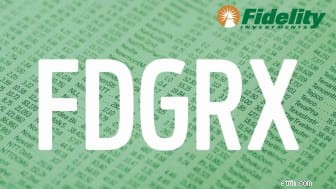
Fidelity Growth Company is Fidelity's best large-company growth fund. Over the past decade, manager Steven Wymer has delivered a 23.9% annualized total return to shareholders, which trounces the S&P 500. Only a dozen or so funds have done better than that over the past 10 years.
Many investors are shut out to Fidelity Growth Company now because it's closed to new investors. But if your 401(k) plan includes FDGRX as an investment option, you can still invest in it, even if you're new to the fund.
Wymer holds close to 500 stocks in the fund, with a heavy tilt toward information technology companies, such as Nvidia, Salesforce.com (CRM) and Shopify, as well as communications services firms, such as Google parent Alphabet, Facebook parent Meta Platforms and Roku (ROKU), the streaming-device company.
Economically sensitive stocks have recently given back some of their leadership to secular growth stocks, Wymer says in a recent report. "The outperformance of a stock or sector in the months ahead will be driven more by individual fundamentals than macro factors or trends," he says. That's why he's focused on companies with a strong outlook based on fundamentals.
If you're lucky enough to have access to FDGRX in your 401(k) plan, buy shares.
Learn more about FDGRX at the Fidelity provider site.

About a decade ago, Pimco Total Return was the biggest bond fund in the country and its manager, Bill Gross, was "the bond king." But in 2014, Gross left the fund, and the firm he cofounded under a cloud after a string of missed big-picture calls on the economy and interest rates. The firm explained the departure was due to "fundamental differences."
Since then, PTTAX has slipped from its perch. It's not the biggest bond fund anymore. But with $72 billion in assets, Pimco Total Return still ranks among the most widely held bond funds in America.
On a total return basis, it's not a dazzler, but the fund is still a solid choice for bond exposure in your 401(k). Over the past five years, well after the dust from Gross's departure settled, the fund has returned 3.8% annualized, just past the 3.6% annualized return in the Bloomberg U.S. Aggregate Bond index.
Mark Kiesel, Scott Mather and Mohit Mittal run Pimco Total Return together, but the fund's process hasn't changed. The firm's investment committee makes the big-picture calls on the economy and interest rates, which guides the managers and analysts as they do their research on security selection and make decisions on what sectors to focus on.
They invest mostly in investment-grade debt; U.S. government-related debt and high-quality corporate credit make up 62% of assets at last report. But the fund also buys junk-rated corporate IOUs (2%), mortgage-backed and asset-backed securities (21%), and foreign debt issued in developed (5%) and emerging countries (18%). (The allocations add up to more than 100 because of certain short-duration securities that the fund holds, including futures, swaps and other derivatives.)
The investment process can sometimes lead to missteps – if the firm's investment committee makes the wrong call, say, on the direction of interest rates. But over time the strength of the fund's security selection, which is driven by thorough fundamental analysis, has kept the fund steady. It beats the Bloomberg U.S. Aggregate Bond index over time, and boasts better risk-adjusted returns, too. But the fund yields 1.2%, less than the current 1.5% yield of the index.
Learn more about PTTAX at the Pimco provider site.
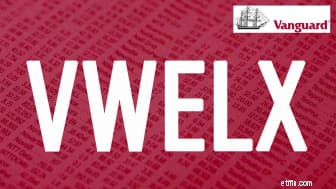
Vanguard Wellington has a long history and a standout long-term record. Founded in 1929, it is the nation's oldest balanced fund. Roughly two-thirds of the fund holds stocks; rest of the portfolio is devoted to bonds.
VWELX – another member of the Kiplinger 25 – has undergone a bit of a changing of the guard at the top. Daniel Pozen, a comanager since 2019, took over as sole manager of the stock side of the fund in July 2020; Loren Moran, a comanager on the bond side since 2017, is now the fund's sole bond picker after a comanager retired in June 2021.
On the stock side, Pozen favors high-quality large companies with a competitive edge over peers. Alphabet, Microsoft and Meta Platforms were top holdings at last report. He has trimmed the number of stocks in the portfolio from the high 80s to the high 60s since taking over. Stocks aren't required to pay a dividend to be considered for the portfolio, but roughly 85% of the stocks in the fund do.
On the bond side, Moran tilts heavily toward high-quality corporate debt, but spices up returns with investment-grade asset-backed securities and taxable municipal bonds. She holds roughly one-quarter of the fixed-income portfolio in Treasuries and agency bonds to maintain liquidity – easy access to cash – in VWELX. That's less than the typical 30% of assets that peer balanced funds hold on average.
Vanguard Wellington is a moderate-risk investment choice because it holds both stocks and bonds. But it still packs a punch.
Learn more about VWELX at the Vanguard provider site.
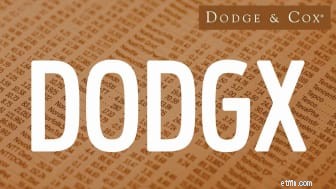
Dodge &Cox Stock has been a member of the Kiplinger 25, our favorite actively managed no-load funds, since 2008. The fund's contrarian, buy-at-a-bargain-and-wait strategy takes some extra patience and perhaps is best suited to investors with long time horizons.
Longtime shareholders have not been disappointed. Over the past decade, Stock has returned 15.5% annualized. That trails the S&P 500, which has gained 17.0% annualized. But the gain in the index is thanks mostly to fast-growing stocks that DODGX, which favors value-priced stocks, doesn't typically own. But its performance against its peers is noteworthy; Dodge &Cox Stock beats 99% of its peers:large-company value funds.
Nine managers work collectively to pick stocks in companies that are temporarily undervalued by the stock market but have a favorable long-term growth outlook. Holdings in the portfolio, for example, sport an average 13.3 price-to-earnings ratio based on earnings estimates for the next 12 months. By contrast, constituents in the S&P 500 index have an average forward P/E ratio of 21.4.
Shares in financial and health care companies comprise 45% of the fund's assets. Among the fund's biggest holdings, for instance, are Wells Fargo (WFC), Capital One Financial (COF), Charles Schwab (SCHW) and Sanofi. Foreign stocks make up a little more than 10% of assets.
Dodge &Cox Stock is one of the best mutual funds for 401(k) investors seeking a market-beating actively managed fund. But the contrarian tilt of this fund is best suited to those with a medium to long time horizon.
Learn more about DODGX at the Dodge &Cox provider site.
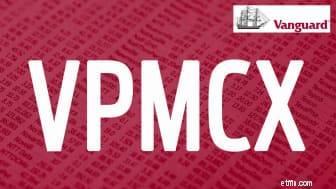
Vanguard Primecap was closed to all investors long ago, but if it's offered in your 401(k) plan, you can still put away up to $25,000 a year. Consider yourself lucky. Vanguard Primecap is a superb fund run by five of the best stock-pickers in the country.
The managers – Theo Kolokotrones, Joel Fried, Alfred Mordecai, M. Mohsin Ansari and James Marchetti – work independently managing their own slice of the fund's assets. But they each aim to invest in growing companies that trade at bargain prices. In particular, they look for a catalyst – a new product, new executives at the helm or a restructuring – that they think will push a stock price higher over the next three to five years.
Once they buy a stock, they tend to hang on. The fund's 6% turnover ratio is a fraction of the 55% to 87% turnover of typical U.S. stock funds that invest in large companies.
"Because the Primecap team is buying stocks facing near-term uncertainty, it often takes time for their ideas to work out," says Dan Wiener, editor of The Independent Adviser for Vanguard Investors . "But in contrast to many other growth managers, the Primecap team is willing to wait, and on average holds onto a stock for a decade."
VPMCX's record isn't blemish-free, of course. Despite a 10-year annualized record that beats the S&P 500, Vanguard Primecap has lagged the index in five of the past 10 full calendar years, most recently in 2020.
But over the long haul, Vanguard Primecap shareholders have gotten a lot richer.
Learn more about VPMCX at the Vanguard provider site.
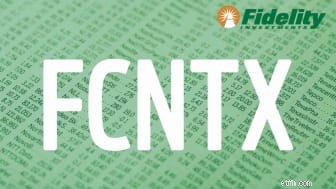
Fidelity Contrafund is a proven standout.
Manager Will Danoff prefers to buy beaten-down or overlooked best-in-class companies with superior earnings growth, proven management teams and sustainable competitive advantages. These days, he's bullish on tech – well, he has been for years, but he is particularly keen on the space now as digital transformation stories continue apace. More than 30% of the fund is invested in technology, at last report, which is a touch above the 28% weighting in the S&P 500 stock index. He has owned Amazon.com, a top holding, since 2007, and Apple, another top FCNTX holding, since 2003.
Watchers of Fidelity funds consider Contrafund a conservative choice for growth. There's some merit to that. Over the past five years, for instance, the fund's 22.8% annualized return ranks better than just 53% of its peer group:funds that invest in growing, large companies. But FCNTX has been less volatile during that period than the typical large-company growth fund, too.
This is one of the best 401(k) mutual funds for investors who want growth but not all the volatility that comes with a more aggressive fund.
Learn more about FCNTX at the Fidelity provider site.
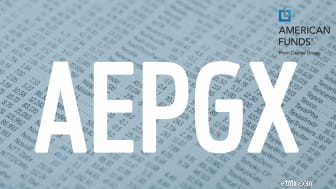
American Funds EuroPacific Growth is the biggest actively managed foreign stock fund in the country. But the Capital System of dividing a fund's assets among multiple managers has helped the fund stay competitive. Over the past five and 10 years, for instance, the fund has largely kept pace with its typical peer:funds that invest in large, foreign companies. And it beats the MSCI EAFE index of stocks in foreign developed countries.
Certainly, there are zippier foreign-stock funds available out there. But in a 401(k) plan, the investment choices, especially with foreign-stock funds, are typically limited to an actively managed fund and an index fund. So, the question for 401(k) investors is whether an investment in AEGPX is better or worse than an investment in an international-stock index fund.
On that, the verdict is clear:EuroPacific Growth beats Vanguard Total International Stock Index (VGTSX) over the past two, three, five and 10 years. What's more, during the recent bear market in early 2020, EuroPacific Growth fund held up better, with a 31.4% loss, compared with a 33.3% loss in Vanguard Total International Stock index fund.
AEPGX is among the best 401(k) mutual fund options around, and we don't expect that to change even though a longtime manager is stepping down at the end of 2021. Even after his departure, AEPGX will still have 10 managers.
Learn more about AEPGX at the Capital Group provider site.